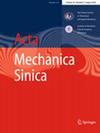The role of hydrodynamic effect in the meeting of multiple fish is a fascinating topic. The interactions of two self-propelled flexible plates swimming in opposite directions horizontally and maintaining a certain lateral distance are numerically simulated using a penalty-immersed boundary method. The effects of the flapping phase and lateral distance on the propulsive performance of two fish meetings are analyzed. Results show that, when two plates meet, if their leading edges diverge laterally, the individual plate can efficiently and rapidly move apart from the other horizontally. If their leading edges converge laterally, the plate motion can be retarded, leading to high energy consumption. Moreover, an increasing lateral distance between two plates significantly weakens the fluid-structure interactions, resulting in an exponential decline in mean cruising speed. A quantitative force analysis based on vortex dynamic theory is performed to gain physics insight into the hydrodynamic interaction mechanism. It is found that lateral separation between the two leading edges enhances the vorticity generation and boundary vorticity flux on the surface of the plate, subsequently reinforcing the thrust effect and increasing horizontal velocity. This study offers insight into the hydrodynamic mechanisms of the fluid-structure interactions among fish moving toward each other and suggests potential strategies for enhancing the maneuverability of robotic fish in complex environment.


